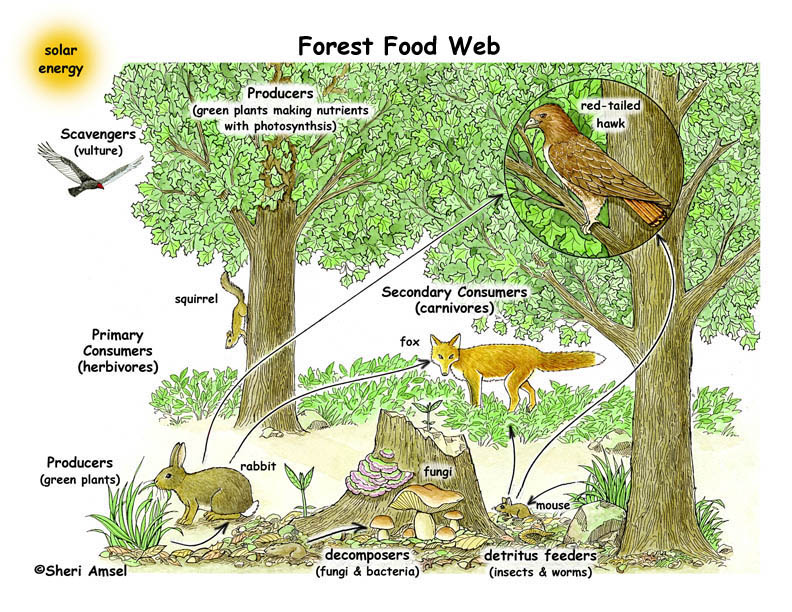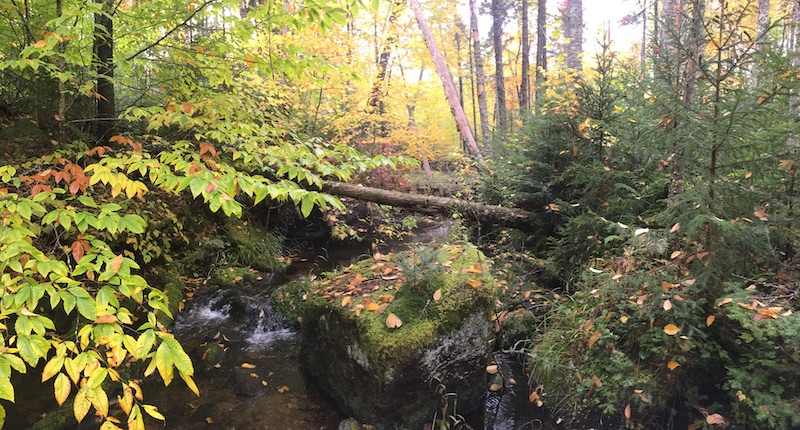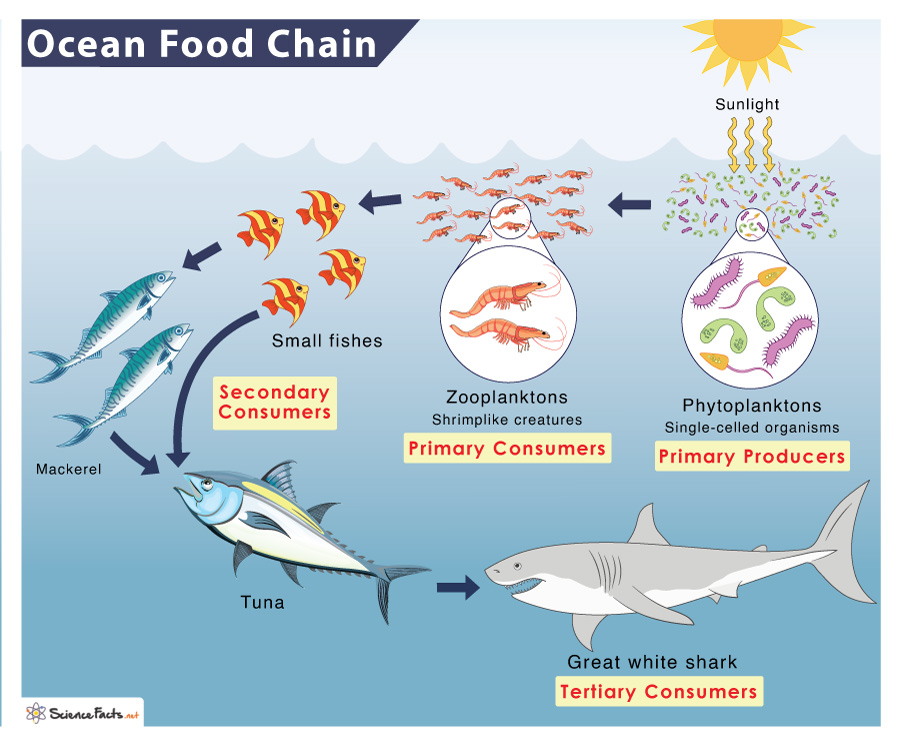Topic ecosystem in a forest: Delve into the heart of nature with "Ecosystem in a Forest," exploring the vibrant interconnections that sustain and enrich our planet"s woodlands.
Table of Content
- What is an ecosystem in a forest?
- Overview of Forest Ecosystems
- Types of Forest Ecosystems
- Flora and Fauna Diversity
- Ecological Functions of Forests
- Photosynthesis and Carbon Sequestration
- Soil Composition and Health
- YOUTUBE: Understanding Forest Ecosystems
- Water Cycle and Forests
- Human Impact on Forest Ecosystems
- Conservation Efforts and Sustainable Management
What is an ecosystem in a forest?
An ecosystem in a forest refers to the complex web of interactions between living organisms (plants, animals, microbes) and their environment (soil, water, air) within a forested area. It is a dynamic and interconnected system where each component plays a vital role in maintaining the balance and functioning of the entire ecosystem.
In a forest ecosystem, various organisms coexist and interact with each other. These organisms can be classified into different trophic levels:
- Producers: These are primarily the plants and trees that utilize sunlight, water, and nutrients from the soil to perform photosynthesis and produce food for themselves.
- Consumers: These are organisms that consume the producers (herbivores) or other consumers (carnivores, omnivores). Consumers are further categorized into different trophic levels based on their feeding habits.
- Decomposers: Decomposers like bacteria and fungi play a crucial role in breaking down dead organic matter, returning nutrients back to the soil, and facilitating the recycling of nutrients within the ecosystem.
The physical and chemical elements of the forest environment, such as temperature, rainfall, soil composition, and nutrient availability, also play a crucial role in shaping the forest ecosystem.
Within a forest ecosystem, there are intricate relationships and dependencies among the organisms. For example, plants provide food and shelter for herbivores, which in turn serve as prey for carnivores. The decomposers break down dead plant and animal matter, releasing essential nutrients back into the soil that can be absorbed by the plants, thus completing the nutrient cycle.
Forests provide various ecosystem services, including carbon sequestration, oxygen production, water regulation, soil protection, and habitat for numerous species. They also contribute to global biodiversity and play a vital role in maintaining the overall health of the planet.
In conclusion, a forest ecosystem is a complex and interconnected system where living organisms and their environment interact and depend on each other for survival and functioning.
READ MORE:
Overview of Forest Ecosystems
Forest ecosystems are dynamic and complex environments where plants, animals, and microorganisms interact with their physical surroundings to create a vibrant web of life. These ecosystems are not only home to a vast array of species but also provide essential services to our planet, such as oxygen production, carbon storage, and water filtration.
- Components: Includes trees, underbrush, various species of animals and insects, fungi, and microorganisms.
- Types: Ranges from tropical rainforests and temperate forests to boreal forests and mangroves, each with unique characteristics and inhabitants.
- Function: Play a crucial role in global carbon cycles and climate regulation, soil preservation, and providing habitat for biodiversity.
- Challenges: Facing threats from deforestation, climate change, and pollution, which impact their health and survival.
Understanding forest ecosystems is vital for their conservation and the sustainability of our planet"s environmental health.
:max_bytes(150000):strip_icc()/489034241_5-56af62885f9b58b7d0183204.jpg)
Types of Forest Ecosystems
Forest ecosystems are incredibly diverse, each characterized by unique climates, geographies, and biological compositions. This diversity is crucial for the balance of our planet"s ecosystems and the variety of services they provide.
- Tropical Rainforests: Located near the equator, these forests are known for their high biodiversity, dense vegetation, and significant rainfall.
- Temperate Forests: Found in temperate zones, they experience four distinct seasons and are home to a variety of trees, including deciduous and evergreens.
- Boreal Forests (Taiga): Situated in the northern latitudes, characterized by long winters and short summers, dominated by coniferous trees.
- Mangrove Forests: Coastal ecosystems found in tropical and subtropical regions, important for protecting shorelines and supporting marine life.
- Cloud Forests: High-altitude forests that are constantly enveloped in mist or clouds, fostering unique plant and animal species.
Each type of forest ecosystem plays a specific role in environmental conservation, supporting a unique array of flora and fauna and offering various ecological benefits.
Flora and Fauna Diversity
The diversity of flora and fauna in forest ecosystems is a testament to the complexity and resilience of these natural habitats. Forests are a sanctuary for countless species, offering a mosaic of habitats that sustain biodiversity across the globe.
- Flora: Forests boast an extensive range of plant species, from towering trees and lush underbrush to a vast array of ferns, mosses, and fungi. Each forest type has its distinctive vegetation, adapted to its specific climate and soil conditions.
- Fauna: The animal life within forests is equally diverse, including insects, birds, mammals, reptiles, and amphibians. Each species plays a crucial role in the ecosystem, contributing to the balance of predator-prey relationships and the pollination of plants.
- Endemic Species: Many forests are home to endemic species, which are found nowhere else on Earth. These species are particularly important for conservation efforts, as their survival is closely tied to the health of their forest habitat.
- Ecological Roles: Each species within the forest ecosystem has a specific role, whether as pollinators, decomposers, or providers of food and shelter to other species. This interdependence is what makes forest ecosystems so resilient and productive.
The preservation of flora and fauna diversity is critical for maintaining the health and functionality of forest ecosystems, highlighting the need for continued conservation efforts.

Ecological Functions of Forests
Forests play a critical role in supporting life on Earth, performing several key ecological functions that benefit the environment, wildlife, and humans alike. Their impact is far-reaching, influencing global climate systems, water cycles, and biodiversity.
- Carbon Sequestration: Forests act as carbon sinks, absorbing carbon dioxide from the atmosphere during photosynthesis, which helps mitigate climate change.
- Water Regulation: They play a crucial role in the water cycle, regulating the flow and quality of water by filtering pollutants and stabilizing soil to prevent erosion.
- Biodiversity Support: Offering diverse habitats, forests are key to sustaining the planet"s biodiversity, providing shelter and food for countless species.
- Soil Conservation: The roots of forest plants help bind the soil, preventing erosion, while fallen leaves contribute to the soil"s organic matter, enhancing its fertility and structure.
- Climate Regulation: Forests influence local and global climates by moderating temperatures, increasing humidity, and contributing to precipitation patterns.
- Pollution Absorption: Trees and plants in forests can absorb pollutants from the air, acting as natural air filters and improving air quality.
- Recreational and Cultural Benefits: Beyond their ecological roles, forests provide recreational spaces for humans and are integral to many cultures and traditions around the world.
The multifaceted ecological functions of forests underscore their importance to Earth"s environmental health and the well-being of all species, including humans, that depend on them.
Photosynthesis and Carbon Sequestration
Photosynthesis and carbon sequestration are pivotal processes within forest ecosystems, playing essential roles in mitigating climate change and sustaining the global carbon cycle. Through these natural mechanisms, forests act as vital carbon sinks, converting carbon dioxide into organic matter and oxygen.
- Photosynthesis: This process involves green plants and trees capturing sunlight to convert carbon dioxide and water into glucose and oxygen. It is the fundamental process that fuels life in the forest, supporting diverse food webs.
- Carbon Storage: Forests store carbon in the biomass of trees and other vegetation, as well as in the soil. This storage includes living trees, deadwood, underbrush, and organic matter in the soil.
- Long-term Sequestration: Mature forests, particularly old-growth forests, are especially effective at storing carbon for long periods, making them crucial in the fight against climate change.
- Role of Different Forest Types: While all forests contribute to carbon sequestration, the capacity varies by type. Tropical rainforests, for instance, are highly efficient due to their dense biomass and year-round growth.
- Impact on Climate Change: By absorbing significant amounts of CO2, forests help reduce the concentration of greenhouse gases in the atmosphere, mitigating global warming and climate change.
The synergistic effects of photosynthesis and carbon sequestration highlight the indispensable role of forests in maintaining ecological balance and addressing environmental challenges.
:max_bytes(150000):strip_icc()/497408077-56af61ff3df78cf772c3c309.jpg)
Soil Composition and Health
The health and composition of soil in forest ecosystems are crucial for sustaining plant life and supporting biodiversity. Soil is not just a medium for plant growth but a complex, living ecosystem that plays a key role in nutrient cycling, water filtration, and carbon storage.
- Soil Layers: Forest soils are composed of several layers, including the litter layer, topsoil, and subsoil, each playing a unique role in nutrient cycling and supporting plant roots.
- Organic Matter: Decaying plant and animal matter contributes to the richness of the soil, enhancing its fertility and structure, and providing essential nutrients for plant growth.
- Microbial Activity: The soil is teeming with microorganisms, including bacteria, fungi, and protozoa, which decompose organic matter, fix nitrogen, and maintain soil health.
- Soil Types: Forest ecosystems can feature a variety of soil types, from rich loams in deciduous forests to acidic soils in coniferous forests, each supporting different types of vegetation.
- Water Retention: Healthy forest soil has the ability to retain water, which is vital for plant growth and helps regulate the water cycle by reducing runoff and erosion.
- Impact of Deforestation: Loss of forest cover can lead to soil degradation, including erosion, loss of fertility, and reduced capacity to store carbon, emphasizing the need for sustainable forest management.
Maintaining soil health is fundamental for the productivity and resilience of forest ecosystems, highlighting the importance of conservation and sustainable land use practices.
Understanding Forest Ecosystems
\"Discover the wonders of biodiversity in our immersive video experience! Dive deep into the vibrant world of plants, animals, and ecosystems, and learn how we can all work together to protect and preserve the incredible diversity of life on our planet.\"
Temperate Forest Ecosystems
\"Get ready to explore the powerful impact of climate on our planet in this eye-opening video. Uncover the fascinating connections between temperature, weather patterns, and the delicate balance of our natural environment. Gain a deeper understanding of the urgent need for climate action and how we can each make a difference.\"
Water Cycle and Forests
Forests play an integral role in the Earth"s water cycle, influencing the movement, quality, and distribution of water across the planet. Their impact on the water cycle is crucial for environmental health, climate regulation, and human water resources.
- Transpiration: Trees and plants release water vapor into the atmosphere through transpiration, contributing to cloud formation and precipitation.
- Water Infiltration: Forest soils facilitate the infiltration of rainwater, replenishing groundwater supplies and reducing surface runoff, which can lead to erosion.
- Regulation of Stream Flow: By absorbing rainfall and slowly releasing it, forests help maintain steady stream flows, reducing the risk of floods and droughts.
- Water Quality: Forests act as natural water filters, trapping pollutants and sediments, which enhances the quality of water flowing into rivers, lakes, and aquifers.
- Climate Impact: The interaction between forests and the water cycle has a significant impact on local and global climates, affecting rainfall patterns and temperature regulation.
- Threats from Deforestation: The removal of forest cover disrupts the water cycle, leading to increased runoff, reduced water quality, and altered precipitation patterns, underscoring the need for forest conservation.
The symbiotic relationship between forests and the water cycle is vital for sustaining ecosystems, supporting agriculture, and providing clean water for human use, highlighting the importance of protecting and restoring forested areas.

Human Impact on Forest Ecosystems
Human activities have profoundly affected forest ecosystems worldwide, leading to significant environmental challenges. While some impacts facilitate forest growth and health, many have detrimental effects, necessitating urgent and sustainable management practices.
- Deforestation: The clearing of forests for agriculture, logging, and urban development reduces biodiversity, disrupts habitats, and contributes to climate change.
- Pollution: Air and water pollution from industrial and agricultural sources can degrade forest health, affecting both flora and fauna.
- Climate Change: Rising temperatures and changing precipitation patterns affect forest growth and species distribution, leading to shifts in ecosystem dynamics.
- Introduction of Invasive Species: Non-native species can outcompete native flora and fauna, altering forest structure and function.
- Overexploitation: Unsustainable logging, hunting, and fishing practices deplete resources, reducing forest resilience and ecological balance.
- Reforestation and Afforestation: Planting trees and restoring forested areas can help mitigate negative impacts, enhancing carbon sequestration and biodiversity.
- Conservation Efforts: Protected areas, sustainable land management, and community engagement are critical for preserving forest ecosystems for future generations.
Understanding and mitigating human impact on forest ecosystems is essential for maintaining their health and the vital services they provide to the planet.
READ MORE:
Conservation Efforts and Sustainable Management
Conserving forest ecosystems and managing them sustainably are critical for preserving biodiversity, combating climate change, and supporting livelihoods. Through collaborative and innovative approaches, we can ensure the health and resilience of these vital natural resources.
- Protected Areas: Establishing national parks, reserves, and wildlife sanctuaries to protect forest ecosystems and their biodiversity from human encroachment and exploitation.
- Sustainable Forestry Practices: Implementing logging practices that minimize environmental impact, such as selective logging and replanting, to maintain forest cover and ecological balance.
- Community-based Management: Involving local communities in conservation efforts, recognizing their traditional knowledge and stake in the forest, and promoting sustainable use of resources.
- Reforestation and Afforestation: Planting trees to restore degraded areas and expand forest cover, enhancing carbon sequestration and restoring habitat for wildlife.
- Ecological Restoration: Rehabilitating ecosystems that have been degraded, damaged, or destroyed, aiming to return them to their natural state or improve their health and resilience.
- Legislation and Policy: Developing and enforcing laws and policies that promote forest conservation, wildlife protection, and sustainable resource management.
- International Cooperation: Collaborating across borders to address global challenges such as climate change, illegal logging, and wildlife trafficking.
- Education and Awareness: Raising awareness about the importance of forests and encouraging public participation in conservation activities and sustainable living practices.
Through these and other efforts, we can safeguard forest ecosystems for future generations, ensuring they continue to thrive and provide essential ecological services.
In exploring the intricate tapestry of forest ecosystems, we uncover the pivotal role they play in sustaining life on Earth, highlighting the urgent need for their preservation and responsible stewardship.

:max_bytes(150000):strip_icc()/3-3612f0362edd4dbcb192589a466f2cb4.jpg)






